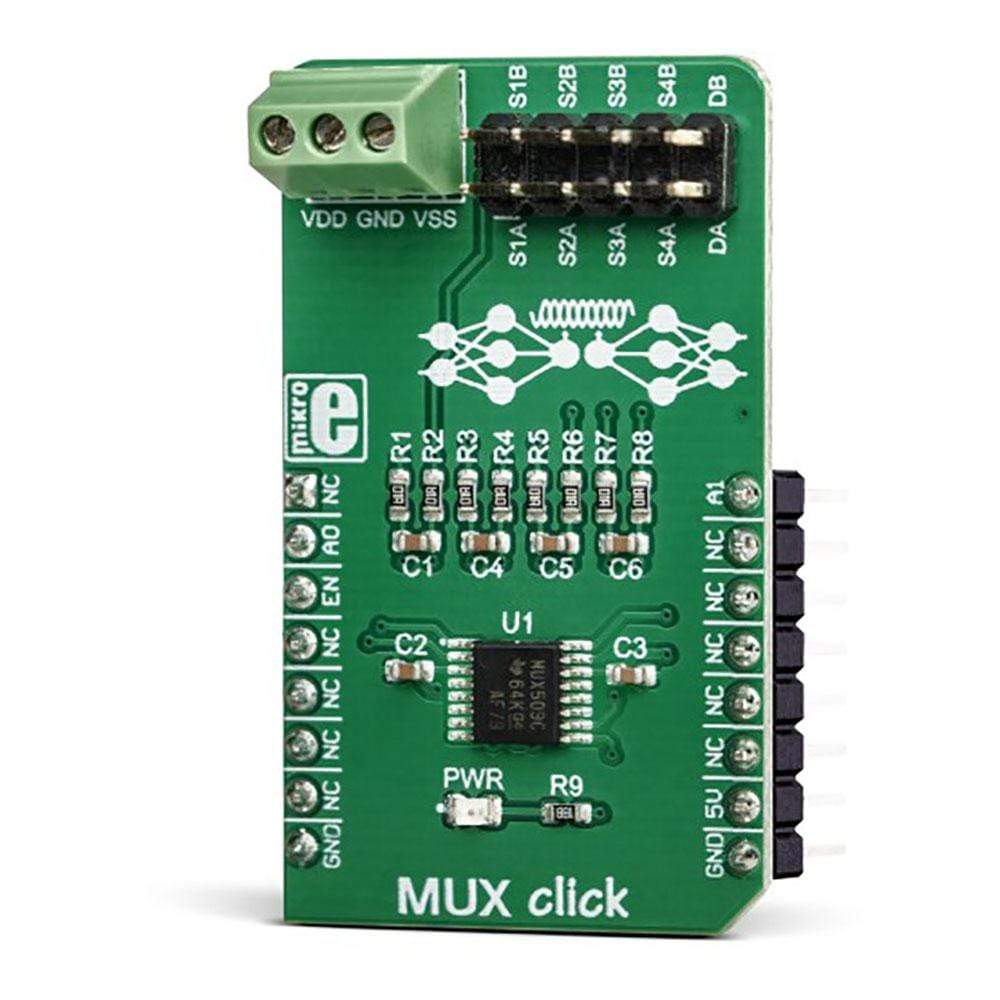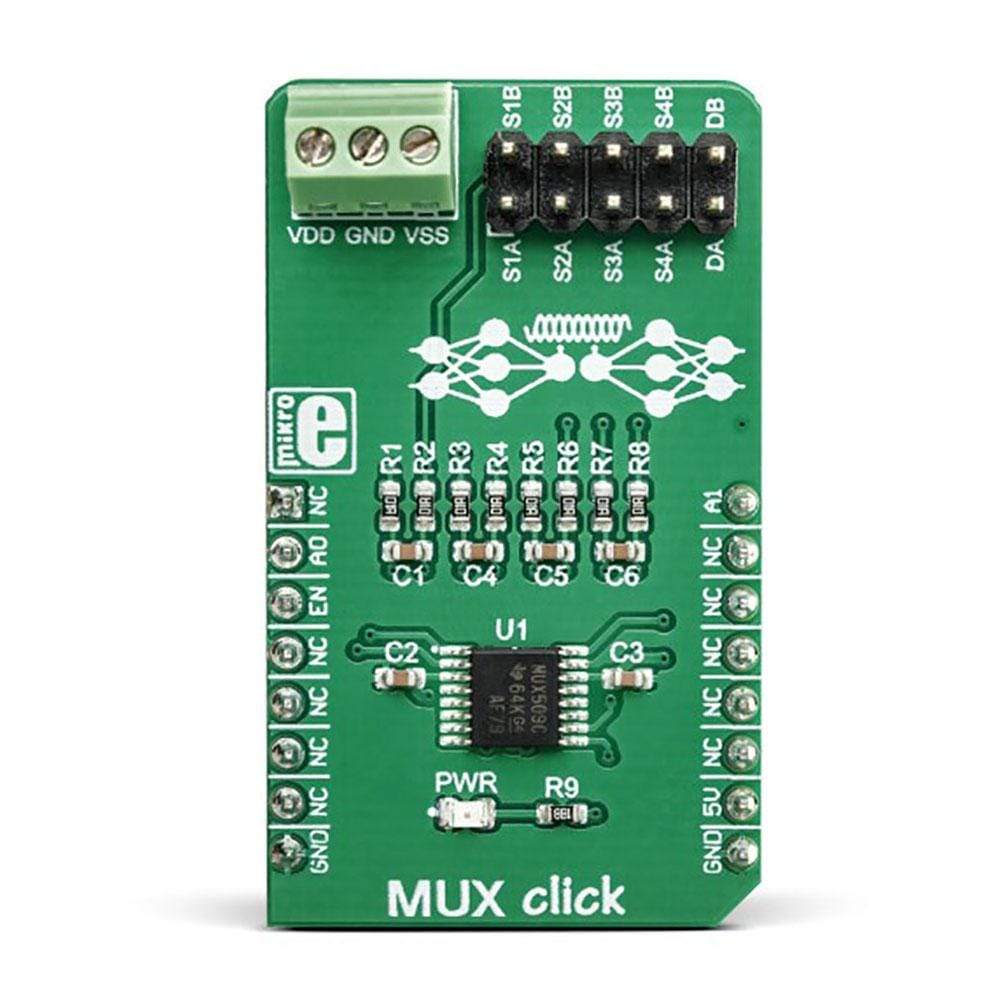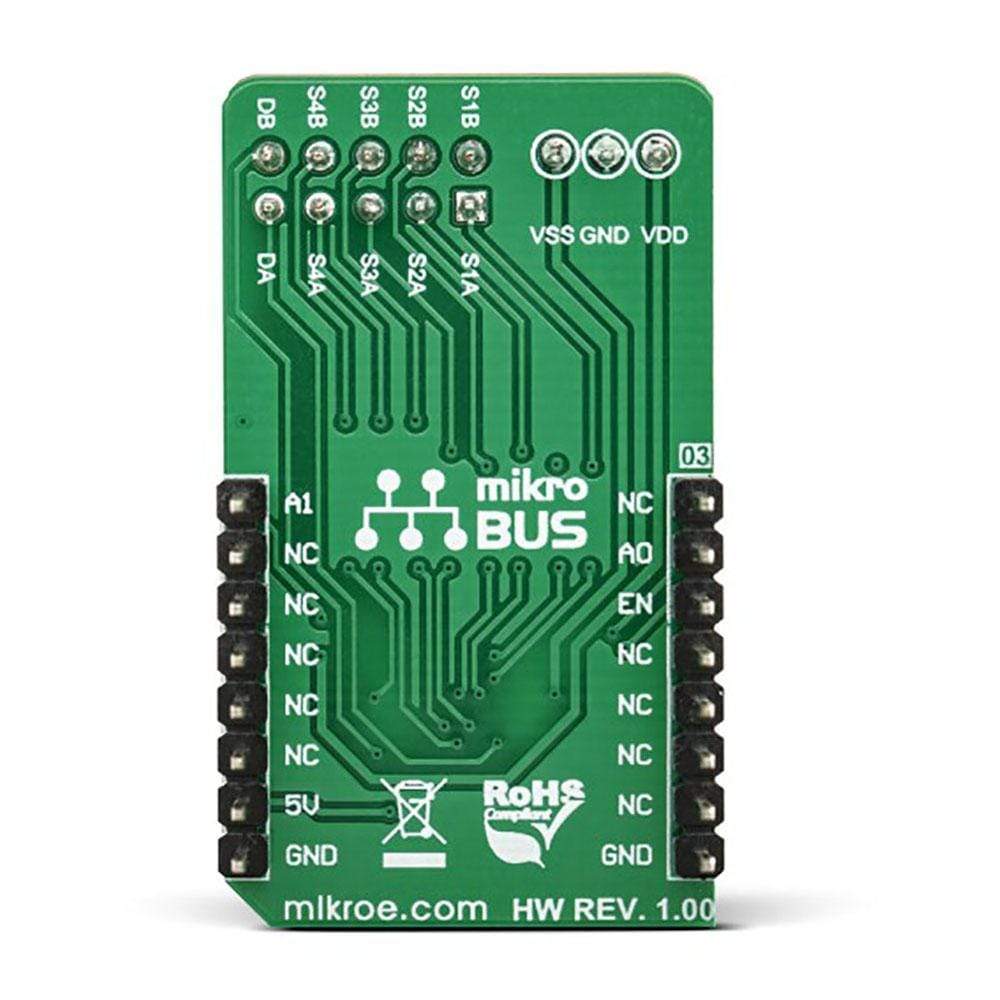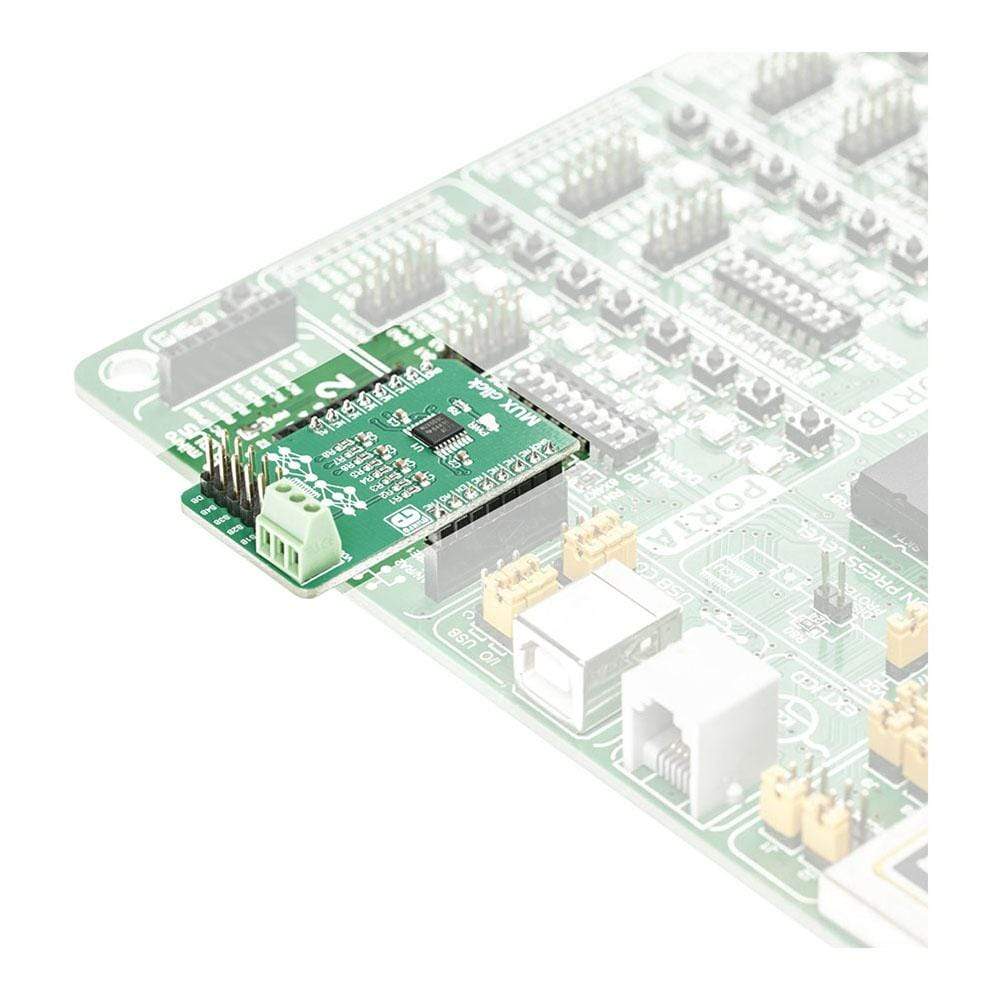



Overview
The MUX Click Board™ switches one of the four differential inputs to one differential output. It employs the MUX509, a modern CMOS analog multiplexing integrated circuit, produced by Texas Instruments. This IC can be powered with both dual power supplies, ranging from ±5V to ±18V, and single power supplies, ranging from 10V to 36V. It offers rail-to-rail operation, allowing the input signal to swing up (and down) to the voltage of the power supply, with no distortion. Features such as the break-before-make switching action, electrostatic discharge protection up to 2kV, low on-resistance and low input current leakage, make this circuit a perfect solution for various switching applications, especially those that utilize differential signals.
It comes in the package which also includes the mikroSDK software and a library with all the functions. The MUX Click Board™ comes as a fully tested and approved prototype, making it a reliable device ready to use on the development board.
Downloads
Das MUX Click Board™ schaltet einen der vier Differenzeingänge auf einen Differenzausgang um. Es verwendet den MUX509, einen modernen analogen CMOS-Multiplex-IC von Texas Instruments. Dieser IC kann sowohl mit zwei Netzteilen im Bereich von ±5 V bis ±18 V als auch mit Einzelnetzteilen im Bereich von 10 V bis 36 V betrieben werden. Es bietet Rail-to-Rail-Betrieb, sodass das Eingangssignal ohne Verzerrung auf die Spannung des Netzteils hoch- (und herunter-)schwingen kann. Funktionen wie die Break-Before-Make-Schaltfunktion, elektrostatischer Entladungsschutz bis zu 2 kV, niedriger Einschaltwiderstand und geringer Eingangsstromverlust machen diesen Schaltkreis zu einer perfekten Lösung für verschiedene Schaltanwendungen, insbesondere solche, die Differenzsignale verwenden.
Es ist im Paket enthalten, das auch die MikroSDK-Software und eine Bibliothek mit allen Funktionen enthält. Das MUX Click Board™ wird als vollständig getesteter und zugelassener Prototyp geliefert und ist somit ein zuverlässiges Gerät, das sofort auf der Entwicklungsplatine verwendet werden kann.
| General Information | |
|---|---|
Part Number (SKU) |
MIKROE-3247
|
Manufacturer |
|
| Physical and Mechanical | |
Weight |
0.019 kg
|
| Other | |
Country of Origin |
|
HS Code Customs Tariff code
|
|
EAN |
8606018713929
|
Warranty |
|
Frequently Asked Questions
Have a Question?
Be the first to ask a question about this.




